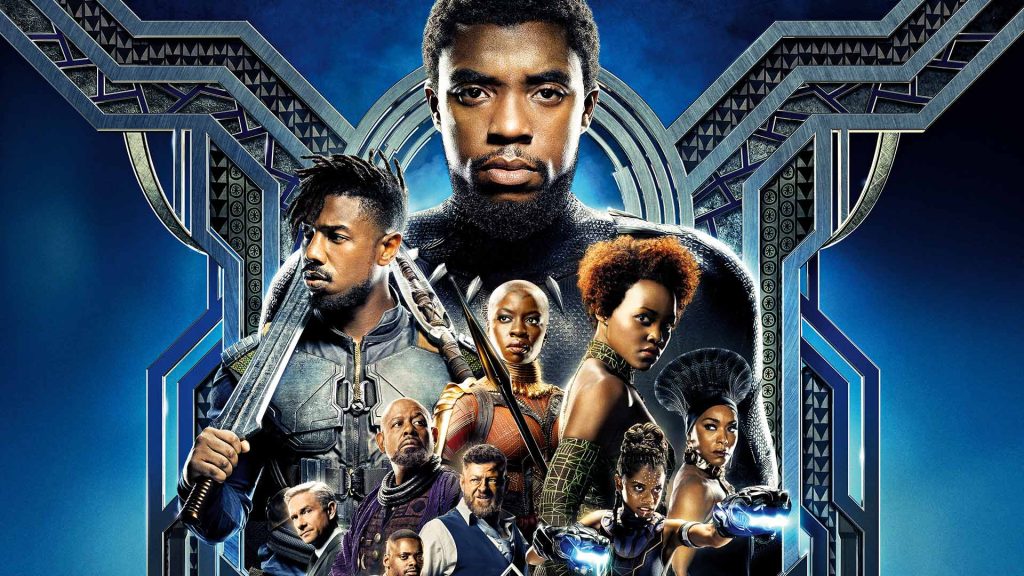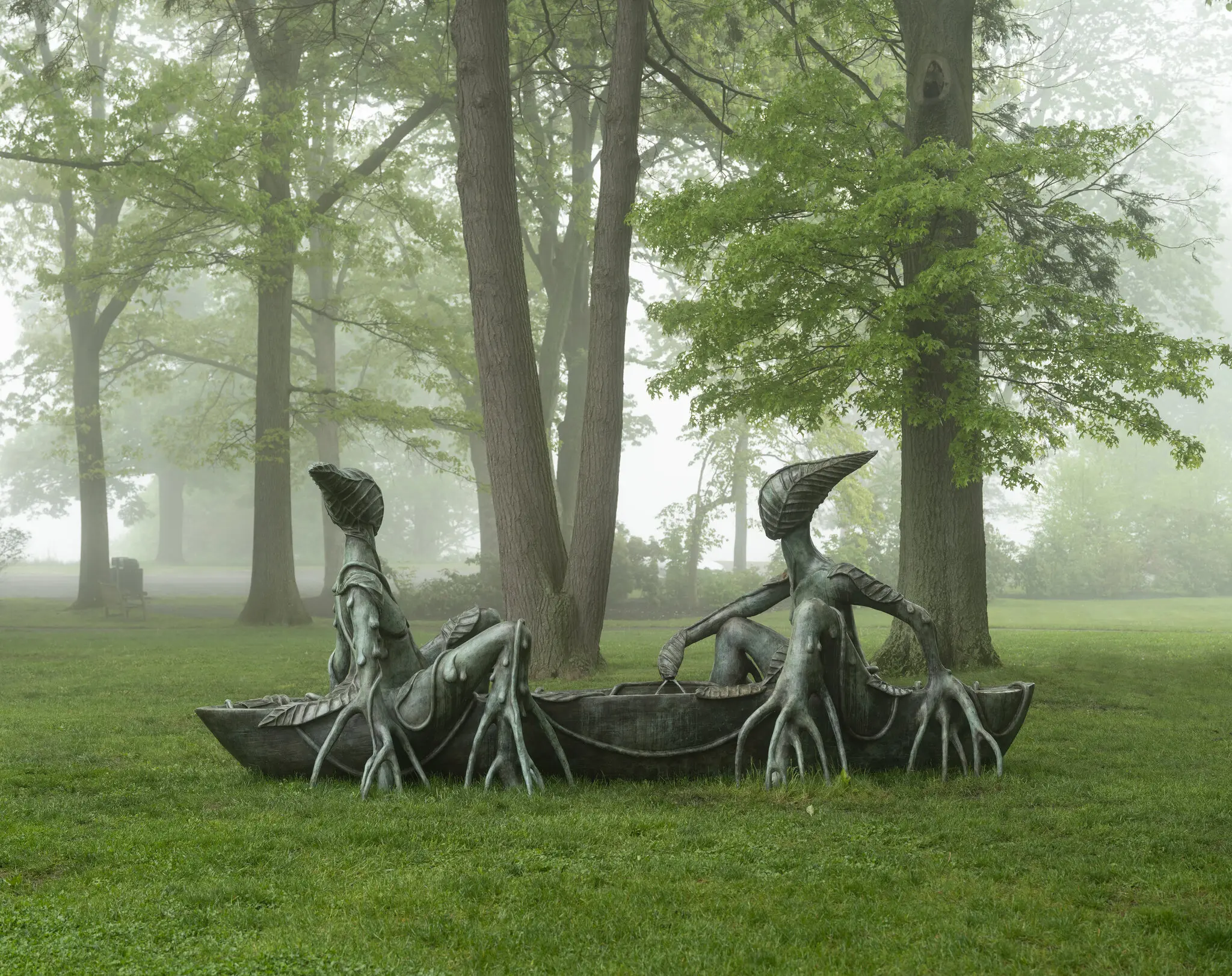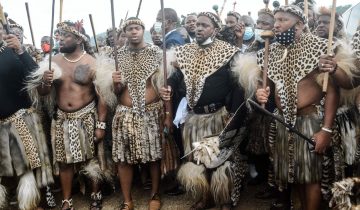Afrofuturism: A Bold Vision for African Art’s Future
At the crossroads of history and imagination, where the tendrils of African culture intertwine with the most fantastical dreams of the future, lies the vibrant and mesmerizing world of Afrofuturism. This cultural movement, which seamlessly melds the elements of African culture, history, and speculative fiction, has emerged as a powerful force in contemporary art, fashion, and literature. In these realms, Afrofuturism is not only reimagining the African identity but also challenging oppressive narratives and promoting innovative, empowering artistic expressions.
For too long, African art has been sidelined or pigeonholed by mainstream Western narratives that have struggled to accommodate its diversity, richness, and complexity. However, Afrofuturism offers a bold and transformative vision for the future of African art that seeks to reclaim and celebrate African cultural heritage while forging a new path that transcends boundaries and expectations. This journal will explore how Afrofuturism is reshaping the African art landscape, the historical context of this movement, and the potential for continued growth and influence in the future.
Historical Context and Development of Afrofuturism
Afrofuturism traces its origins back to the mid-20th century when African-American musicians and writers began to explore themes of science fiction and futurism in their work. Pioneers like Sun Ra, a jazz musician who claimed to be from Saturn, and Octavia Butler, a groundbreaking science fiction author, laid the foundation for what would become Afrofuturism. Their work sought to break free from the chains of history and imagine a future in which the African diaspora could thrive and prosper.
As the movement evolved, it began to encompass a wider range of artistic disciplines, including visual arts, film, and fashion. This expansion was, in part, fueled by the influence of Pan-Africanism and African independence movements, which sought to foster unity and pride among people of African descent around the world. Afrofuturism became a powerful vehicle for exploring themes of identity, liberation, and belonging.
Reimagining African Identity
Central to Afrofuturism is the reimagining of African identity, a process that involves the synthesis of traditional African elements with futuristic visions. The art of Wangechi Mutu, a Kenyan-born artist, exemplifies this approach. Mutu’s work often incorporates African textiles, beads, and other materials into her otherworldly collages and sculptures. By doing so, she challenges Western-centric ideas of progress and modernity, asserting the importance of African cultural heritage in shaping the future.
Similarly, the works of Nigerian writer Nnedi Okorafor explore the intersection of African mythology and science fiction. Her novel “Lagoon” tells the story of an alien invasion in Lagos, Nigeria, and incorporates elements of Nigerian folklore and culture throughout the narrative. In doing so, Okorafor demonstrates the rich potential for storytelling when African traditions are woven into futuristic contexts.
The film “Black Panther” is another prime example of Afrofuturism at work. Directed by Ryan Coogler, the movie transports viewers to the technologically advanced African nation of Wakanda, which has managed to develop its futuristic technology and society while remaining rooted in traditional African aesthetics and customs. The film’s success has helped bring Afrofuturism into the mainstream, showcasing the power of reimagining African identity on a global stage.

Challenging Oppressive Narratives
Afrofuturism also serves as a potent means of challenging oppressive narratives that have long plagued African art. By addressing the legacy of colonialism and racism, Afrofuturist artists are able to deconstruct stereotypes and reductive portrayals of Africa, while also exploring themes of resistance, resilience, and liberation.
South African artist Mary Sibande’s work is a powerful example of this. Her sculptures and installations often feature a character named Sophie, a domestic worker who transforms into various powerful figures, wearing elaborate costumes that blend Victorian-era fashion with traditional African elements. Through these transformations, Sibande confronts the history of domestic servitude and racial oppression in South Africa, while also celebrating the strength and agency of African women.
In literature, Octavia Butler’s “Kindred” offers a harrowing exploration of the legacy of slavery in America. The novel’s protagonist, Dana, an African-American woman, is repeatedly transported back in time to a plantation in the antebellum South. Through this time-travel narrative, Butler forces readers to confront the atrocities of slavery and the lingering effects of racial trauma, while also demonstrating the resilience and strength of the African diaspora.
Promoting Innovative and Empowering Artistic Expressions
Afrofuturism encourages experimentation and boundary-pushing in African art, fostering unique and innovative forms of expression. Take, for example, the work of Senegalese fashion designer Selly Raby Kane, whose avant-garde creations blend traditional African textiles with futuristic silhouettes and materials. Her designs are a striking manifestation of Afrofuturism in fashion, embodying the movement’s commitment to challenging norms and redefining what African fashion can be.
The music of Sudan Archives, an African-American violinist and singer, also exemplifies the innovative spirit of Afrofuturism. She combines elements of Sudanese fiddle music with electronic beats and R&B, crafting a distinctive sound that transcends genres and celebrates her African heritage. Through her work, she not only inspires a new generation of African artists but also fosters cross-cultural collaboration and dialogue.
As the world moves deeper into the 21st century, the importance of Afrofuturism as a cultural and artistic force cannot be overstated. Its ability to challenge traditional notions of art, identity, and progress offers a powerful counter-narrative to the homogenizing forces of globalization. By embracing the unique cultural heritage of Africa and its diaspora, Afrofuturism offers a compelling alternative to the dominant Western-centric narratives that have long shaped our understanding of art and society.
One of the most exciting aspects of Afrofuturism is its inherently collaborative nature. The movement brings together artists, writers, musicians, and designers from across the African continent and the wider diaspora, fostering a rich and vibrant exchange of ideas and creative energies. This collaboration not only fuels the continued growth and evolution of Afrofuturism but also helps to break down barriers between different cultures and artistic traditions.
Moreover, the rise of digital technology and social media has played a significant role in the proliferation of Afrofuturist ideas and aesthetics. Platforms like Instagram, Twitter, and Facebook have provided a global stage for African artists to showcase their work and connect with audiences from around the world. As a result, Afrofuturism has been able to reach an ever-wider audience, inspiring new generations of artists and thinkers to engage with its powerful message of hope and empowerment.
In the coming years, we can expect to see the influence of Afrofuturism continue to grow, not only within the realm of African art but also in the broader global artistic landscape. Its unique blend of cultural heritage, forward-thinking aesthetics, and commitment to social change offers a powerful blueprint for how art can be harnessed as a force for good in an increasingly interconnected world.
From the breathtaking visuals of “Black Panther” to the evocative prose of Nnedi Okorafor, the vibrant fashion of Selly Raby Kane, and the genre-defying music of Sudan Archives, Afrofuturism has proven its ability to captivate audiences and spark meaningful conversations about identity, culture, and the future. As more artists, writers, and creatives continue to embrace the ethos of Afrofuturism, we can expect to see the movement grow and evolve in exciting and unexpected ways.
Afrofuturism’s impact on African art has been nothing short of transformative. By reimagining African identity, challenging oppressive narratives, and promoting innovative and empowering artistic expressions, the movement has breathed new life into the African art landscape. Its future prospects are incredibly promising, with the potential for continued growth and influence across artistic disciplines.
As Afrofuturism continues to evolve and gain traction, it will undoubtedly contribute to a more inclusive and diverse global artistic landscape. Its unique vision for the future of African art holds the power to reshape cultural narratives, inspire new generations, and forge a bold new path forward. In doing so, Afrofuturism will ensure that the rich tapestry of African culture and history continues to shine brightly in the pantheon of artistic expression, unfettered by the shackles of the past and unrestrained in its pursuit of a vibrant, imaginative future.
In conclusion, Afrofuturism stands as a bold and transformative force in the world of African art, offering a vibrant and empowering vision for the future that celebrates the rich tapestry of African culture and heritage. As the movement continues to gain momentum and influence, it will undoubtedly play a crucial role in shaping the course of African art in the 21st century and beyond. Its powerful message of hope, resilience, and creative expression serves as a shining beacon for artists and audiences alike, reminding us all of the boundless potential that lies at the heart of the human spirit.





 No products in the basket.
No products in the basket.